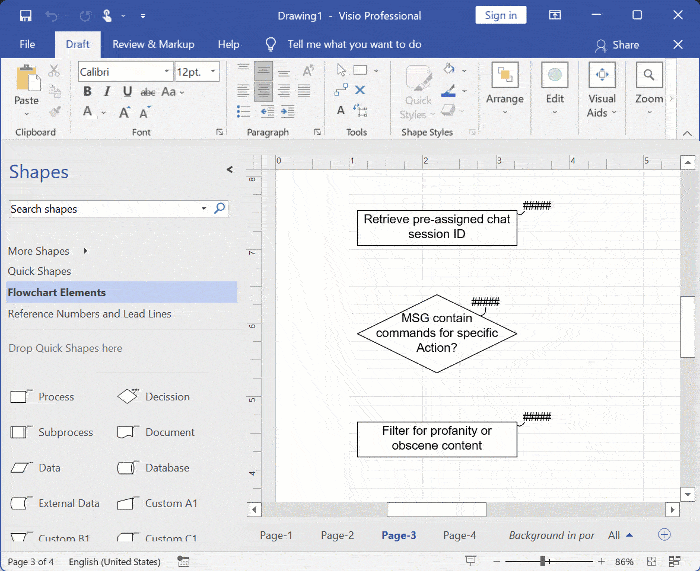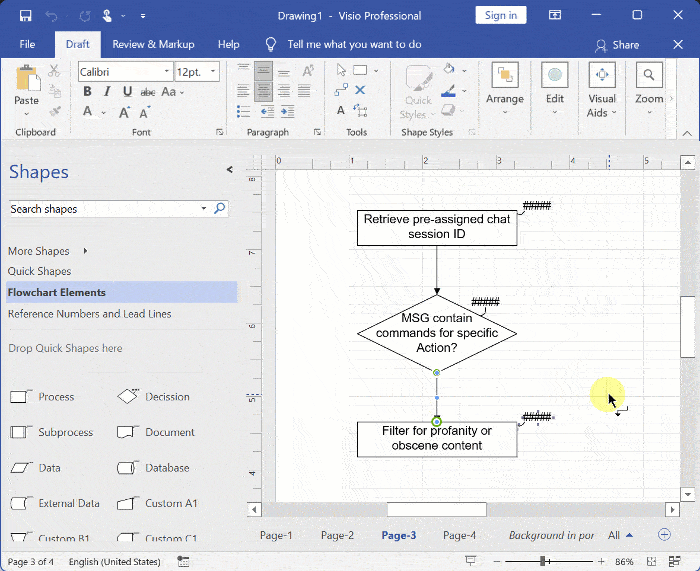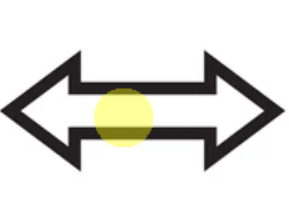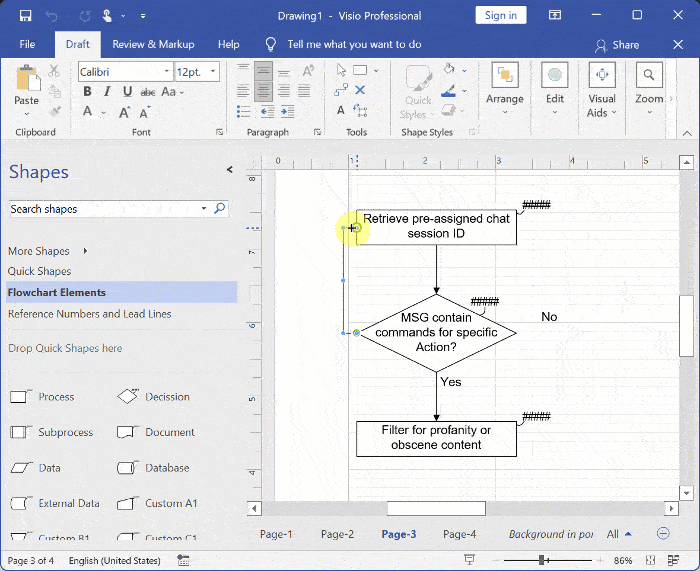Learn how to effectively use connectors in Visio to create clear and organized patent drawings. This video covers the basics of adding, editing, and formatting connectors to ensure your diagrams are precise and easy to understand.
Key Takeaways
- Adding Connectors: Use the Connector tool to add dynamic connections between shapes. Click the Connector tool, hover over the first shape, click, then hover over the second shape and release the mouse.
- Dynamic vs. Point Connections: Dynamic connections adjust their position based on the shapes’ positions, while point connections remain fixed between specific points on the shapes.
- Editing Connectors: Click the Pointer tool to deactivate the Connector command. Then, click on the connector to edit it. You can drag the editing points to adjust the connector’s shape and position.
- Changing Connection Types: Drag the end points of a connector to switch between dynamic and point connections or to connect to different points on the shapes.
- Join Our Webinars: Register for our free webinars to deepen your Visio knowledge and connect with the community.
Try This Yourself:
Prerequisite for the Exercise
Before starting this exercise, please follow these steps:
- Download the File: Fill out the form below to get the Visio-How-Tos–Adding-and-Editing-Connectors.vsdx file.
Download Form
- Open the File: After downloading, open the file to begin the exercise.
Exercise Steps
1. Select the Connector Tool: Make sure the Connector tool  is active in the Tools group on the Home tab
is active in the Tools group on the Home tab

2. Connect the Process to the Decision Shape:
- Hover over the Process shape until a green box appears around it.
- Press and hold the left mouse button, then drag the connector down until a green box appears around the Decision shape.
- Release the mouse button to establish a shape-to-shape connection between the two shapes.

3. Connect the Decision to the Process Shape:
- Hover over the Decision shape until a green box appears around it.
- Press and hold the left mouse button, then drag the connector down until a green box appears around the Process shape.
- Release the mouse button to establish a shape-to-shape connection between the two shapes.

4. Create a Point-to-Point Connection:
- Hover over the right connector point of the Decision shape until a green box appears around the connection point.
- Press and hold the left mouse button, then drag the connector up until a green box appears around the right connector point of the Process shape.
- Release the mouse button to establish a point-to-point connection between the two shapes.

5. Select the Pointer Tool:
- Click on the Pointer tool
 in the Tools group on the Home tab.
in the Tools group on the Home tab.

6. Adjust the Right-Angle Connector:
- Select the Right-Angle Connector.
- Hover over the bottom endpoint of the connector until the pointer changes to a four-headed arrow
 .
. - Press and hold the left mouse button, then drag the endpoint to the left of the Decision shape until a green box appears around the left connection point.
- Release the mouse button to glue the connector to the left connection point.

7. Adjust the Connector’s Top Endpoint:
- Hover over the top endpoint of the connector until the pointer changes to a four-headed arrow
 .
. - Press and hold the left mouse button, then drag the endpoint to the left of the Process shape until a green box appears around the left connection point.
- Release the mouse button to glue the connector to the left connection point.

8. Reshape the Right-Angle Connector:
- Hover over the middle handle of the right-angle connector until the pointer changes to a double-headed horizontal arrow
 .
. - Press and hold the left mouse button, then drag the middle handle to the right until the connector fits as shown.
- Release the mouse button to reshape the connector.

Recommended Reading
Dive into our hands-on exercise to apply what you’ve learned. Access the written instructions, download the practice file, and watch the video demonstration to enhance your Visio skills.
- Adding and Editing Connectors in Visio: Discover how to add and edit connectors in Microsoft Visio to create clear and interconnected patent diagrams with our detailed tutorial.
Recommended Webinars
Further explore the topics covered in this article by attending our webinars. These sessions offer additional insights and the opportunity to ask questions and interact with experts in Visio for patent practice.
- Basic Visio Skills for IP Professionals: Discover the fundamentals of Microsoft Visio in our webinar tailored for IP professionals, covering basic skills to streamline your patent drawing process.
- Visio Q&A Fridays: Join our “Visio Q&A Fridays” webinar series to get expert answers to your questions and enhance your proficiency in using Visio for IP-related work.
Provide Feedback
We value your feedback! Let us know how we can improve or what topics you’d like to see next.
Connect with Mike
Have questions or need support? Connect with Mike for personalized assistance.
Share Your Experience
Found our series helpful? Share it with your network and help others benefit too!
Leave a Reply
You must be logged in to post a comment.